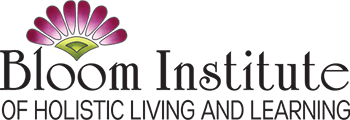[vc_row row_type=”row” use_row_as_full_screen_section=”no” type=”full_width” text_align=”left” background_animation=”none” css_animation=””][vc_column][vc_column_text css=”.vc_custom_1455214988640{margin-bottom: 30px !important;}”]I’ll start with the good news.
At least half of all cancers are preventable!
Cancer is now a worldwide epidemic. According to Canadian health statistics in 2010, 1 in 2.2 (45%) men and 1 in 2.4 (42%) of women will get cancer in their lifetime. Incidence has been on the rise. It is the leading cause of death in Canada and the US.
Cancer is probably the biggest health challenge a person could face. I watched my grandmother, my best friend and my dog die from cancer; and in my practice I work with many who have the disease; some now exist only as a memory. Cancer is devastatingly painful, physically and emotionally, for those afflicted, and their loved ones.
Cancer creates enormous expense for individuals and our health care system. The mainstream cancer establishment fails to see cancer from a broad perspective, instead focusing their funding on costly treatments, early detection and very little to none on primary prevention. Since the 1960’s, independent researchers and activists have been calling our attention toward the relationship between cancer and environmental toxins. I believe this to be the most urgent issue of our times, with air, soil, water and bodily contamination at the spilling point.
The cancer risks from lifestyle factors such as smoking, obesity, alcohol, and diet have become fairly engrained in our minds. We also know that only 5% to 10% of cancers are hereditary. Why is it that people without these risk factors, newborn babies, domestic pets, and wild animals, get cancer at equally alarming rates? Could it be the 10,000 different chemicals in commercial use in everything from food production, cosmetics, to home furnishings? What about industrial pollutants and car exhaust? Or naturally occurring toxins such as radon and asbestos?
Cancer statistics and the state of our environment are alarming. By taking care of mother earth we take care of ourselves. Transform alarm into greater awareness and action. I have found some very useful and empowering resources over the years that I have shared below.
“We have chemicals linked to cancer, both known carcinogens and suspected carcinogens, inside all the bodies of people who live in North America”
– Sandra Steingraber
Herbal medicine has a role to play in cancer prevention and as support for people who have it.
Here is my basic herbal cancer prevention strategy:
- Incorporate regular cleansing and detoxification with herbs and diet into your lifestyle
- Add more herbs and spices to your diet, especially those such as turmeric, thyme, rosemary, sage and garlic which have proven anti-carcinogenic properties
- Use adaptogen herbs such as eleuthero, schisandra, withania, and ginseng to better manage stresses of all kinds whether physical or emotional
- Support your immune system periodically with herbs such as astragulus, elderberry, medicinal mushrooms and adaptogens
- Replace some or all coffee and black tea with herbal and green teas, not only for pleasure, but for the medicine and vitality they bring
- Use herbal tonics to strengthen liver function i.e. milk thistle seeds, dandelion root, turmeric
- Correct chronic degenerative diseases by identifying the cause and using herbs to help restore health
- Remove allergens from the diet and home environment and use herbs to deal with the harmful effects of long term allergies
- Prevent and effectively treat viral infections with herbal medicines
- High consumption of fruits and vegetables reduces cancer risk. Eat at least 8-10 servings of fresh fruits and vegetables daily, ideally organic, seasonal and local, include fresh herbs in the diet.
[/vc_column_text][vc_column_text]Resources:
Prevent Cancer Now – www.preventcancernow.ca
Not-for-profit Canadian movement dedicated to eliminating the preventable causes of cancer.
Guide to Less Toxic Products – www.lesstoxicguide.ca
Published by the Environmental Health Association of Nova Scotia
Thorough examination of household products containing hazardous chemicals and lists alternatives.
Environmental Working Group – www.ewg.org
Not-for-profit environmental research organization dedicating to improving public health and protecting the environment by reducing pollution in air, water and food.
Cancer – 101 Solutions to a Preventable Epidemic
Book written by Liz Armstrong, Guy Dauncey and Anne Wordsworth
In depth review of all known cancer promoters, very practical, can purchase via Prevent Cancer Now website and some book stores.
Herbal Medicine, Healing and Cancer – A Comprehensive Program for Prevention and Treatment
Book written by Donald Yance – nutritionist and herbalist specializing in cancer care.[/vc_column_text][vc_empty_space][/vc_column][/vc_row]
